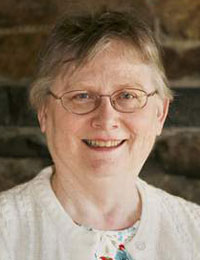 The last of Roger Thompson’s books on my shelf, and the biggest (593 pages including index), is From Deference to Defiance, Charlestown, Massachusetts, 1629–1692. Published in 2012 by NEHGS, this is the last of Thompson’s works on three founding colonial towns – Watertown, Cambridge,[1] and Charlestown. It is a pièce de résistance for descendants of Charlestown families – including a sketch on one of my most interesting ancestors, Phineas Pratt, who died in Charlestown at the age of 90 after surviving in his younger days a heroic, solitary trip through frozen woods to bring rescuers to the aid of Weymouth settlers in 1623. Continue reading Deference to defiance
The last of Roger Thompson’s books on my shelf, and the biggest (593 pages including index), is From Deference to Defiance, Charlestown, Massachusetts, 1629–1692. Published in 2012 by NEHGS, this is the last of Thompson’s works on three founding colonial towns – Watertown, Cambridge,[1] and Charlestown. It is a pièce de résistance for descendants of Charlestown families – including a sketch on one of my most interesting ancestors, Phineas Pratt, who died in Charlestown at the age of 90 after surviving in his younger days a heroic, solitary trip through frozen woods to bring rescuers to the aid of Weymouth settlers in 1623. Continue reading Deference to defiance
What generation am I?

Following up on a post by David Allen Lambert on the question of identity, a semi-related topic involves the generation in the United States to which someone belongs. In my experience, this might mean something different for a genealogist belonging to a family long resident in America, as opposed to the child or grandchild of a recent immigrant.
My most recent immigrant ancestors were my great-great-great-grandparents Joseph Kelly and Rebecca Nelson, who came over from Ireland to Philadelphia in the 1840s and married there in 1850. Through that part of my ancestry, I would call myself sixth generation. I count Joseph and Rebecca as the first generation, and would describe it in a genealogy as follows: Continue reading What generation am I?
Another place
“It is good people who make good places.” – Anna Sewell
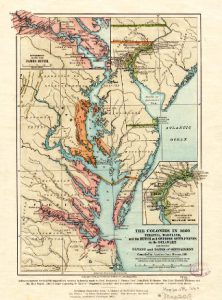
Like most of us discovering our family history, I rely heavily on census records. Often we come across numerous variations in the spelling of names of people, places, and things as we review those records. Recently, in looking through a few extended branches of my tree in differing U.S. Federal Census records, I discovered that a place can mean many different things.
I found an example of this with my great-great-grandfather, John Henry Record (1840–1915). John Record was from Maryland’s Eastern Shore, and (for the most part) records reflecting his origins, and those of his parents, are generally consistent with that area. However, with the arrival of the U.S. Federal Census for 1900 my progenitor states that his mother was born in Sweden. Sweden? Continue reading Another place
Crowdsourcing
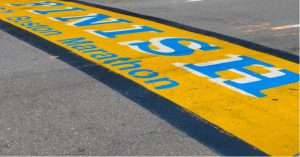 Implementing crowdsourcing as the chief means of gathering information has had success from Wikipedia and the Oxford English Dictionary to Planters Peanuts. In fact, I would be so bold as to put Vita Brevis on this list – as comments from our readers have led to many breakthroughs in our bloggers’ brick walls.
Implementing crowdsourcing as the chief means of gathering information has had success from Wikipedia and the Oxford English Dictionary to Planters Peanuts. In fact, I would be so bold as to put Vita Brevis on this list – as comments from our readers have led to many breakthroughs in our bloggers’ brick walls.
Case in point: On 20 April 2015, I wrote a blog post (Where did the first Boston Marathon winner go?) in which I lamented the problems facing genealogists, especially when asked to locate a person with a very common name in a very large place. Continue reading Crowdsourcing
A family reunion
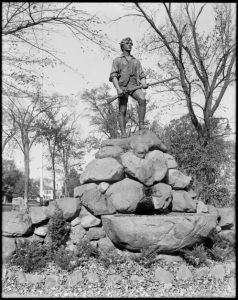
Patriots’ Day, a holiday unique to the State of Massachusetts, commemorates the famous skirmishes between local colonial militia and the British army in Lexington and Concord, Massachusetts, on 19 April 1775. In Lexington, the day is typically celebrated with an early morning reenactment of the skirmish on the town’s green. As an avid watcher of the reenactment, my favorite part of the event comes just prior to the skirmish. Before the fighting ensues, members of the Lexington minutemen—each representing a particular individual who was present on the green that morning—gather on the common for a roll call and commence calling their names in succession. As the roll is taken, one cannot help but notice the frequency at which similar surnames are repeated. Hearing this serves as a reminder that the men who stood on the green that April morning were not only committed to defending their town, their property, and their rights, but they were also related. Continue reading A family reunion
A twinkling star
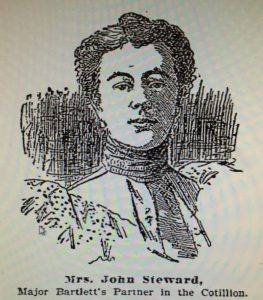
Americans tend to reject the notion of operating within a “social class” structure, although it is sometimes easier to see ourselves as “better than” one person as opposed to “lesser than” another. At the same time, we consume (and relish) the higher gossip associated with European royal families and Hollywood movie stars, and Cleveland Amory – one among a number of authors on the subject – devoted a whole book to the question “Who Killed Society?”[1]
During the last quarter of the nineteenth century, Americans treated “Society” as a kind of blood sport. Continue reading A twinkling star
Earthly remains
 Of all the things we leave behind when our time is done, the most important, of course, is ourselves, the least and the most of our lives. While cultures vary in the veneration of ancestors, my staunch Puritan ancestors held to the rites of our New England traditions.
Of all the things we leave behind when our time is done, the most important, of course, is ourselves, the least and the most of our lives. While cultures vary in the veneration of ancestors, my staunch Puritan ancestors held to the rites of our New England traditions.
Yet one of the most fascinating yet unsettling museums I’ve experienced is the Museo de las Momias de Guanajuato,[1] the Mummy Museum in Guanajuato, Mexico. And what better time to visit that museum than on Dia de los Muertos, the Day of the Dead? We walked with local families up the hill to the cemetery next to the museum where it is customary to picnic, decorate the family grave site, and pay homage to one’s ancestors. Continue reading Earthly remains
Poppa’s wallet
 My grandfather (Walter Robert “Bob” Heisinger, a.k.a. Poppa) was notorious for carrying around a gigantic wallet bursting at the seams with photographs, business cards, and other little mementos he picked up over the years. He would often pull bits and pieces out at social gatherings as props to his stories and jokes. I remember harassing him as a teenager that the thickness of the wallet was contributing to his hip problems and I made a box for him to store some of its contents, though I am sure the box remained empty for the rest of his life. Continue reading Poppa’s wallet
My grandfather (Walter Robert “Bob” Heisinger, a.k.a. Poppa) was notorious for carrying around a gigantic wallet bursting at the seams with photographs, business cards, and other little mementos he picked up over the years. He would often pull bits and pieces out at social gatherings as props to his stories and jokes. I remember harassing him as a teenager that the thickness of the wallet was contributing to his hip problems and I made a box for him to store some of its contents, though I am sure the box remained empty for the rest of his life. Continue reading Poppa’s wallet
Two gravestones, one body

Finding two gravestones for the same person – particularly a widowed person who marries again, or perhaps moves further west – is something not uncommon in genealogical research. A gravestone may be inscribed with both parties’ names with the death date of the living party left empty for when their time comes. However, even when that year is filled in, don’t necessarily think both people are under the same earth. Continue reading Two gravestones, one body
‘True as the needle to the pole’
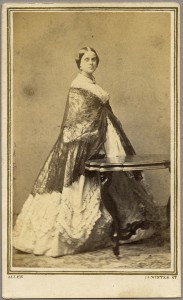
61 Bowdoin Street, Boston, Sunday, 6 November 1864: Mr. Foote[2] gave us a good discourse on the distinction to be held between religious form & religious formalism, and illustrated his meaning by an eloquent allusion the love for our country’s flag – which is after all naught in itself but a piece of coloured bunting, our love for which in times of peace and prosperity is but a form of words, a mode of thought, used to sound the periods of a fourth of July nation.[3] But when war and peril assail its sacred folds, it becomes to us the emblem of all man holds most dear on earth – the holy emblem of all the great ideas for which true men are ready to suffer & die now, as were the martyrs of old. Continue reading ‘True as the needle to the pole’